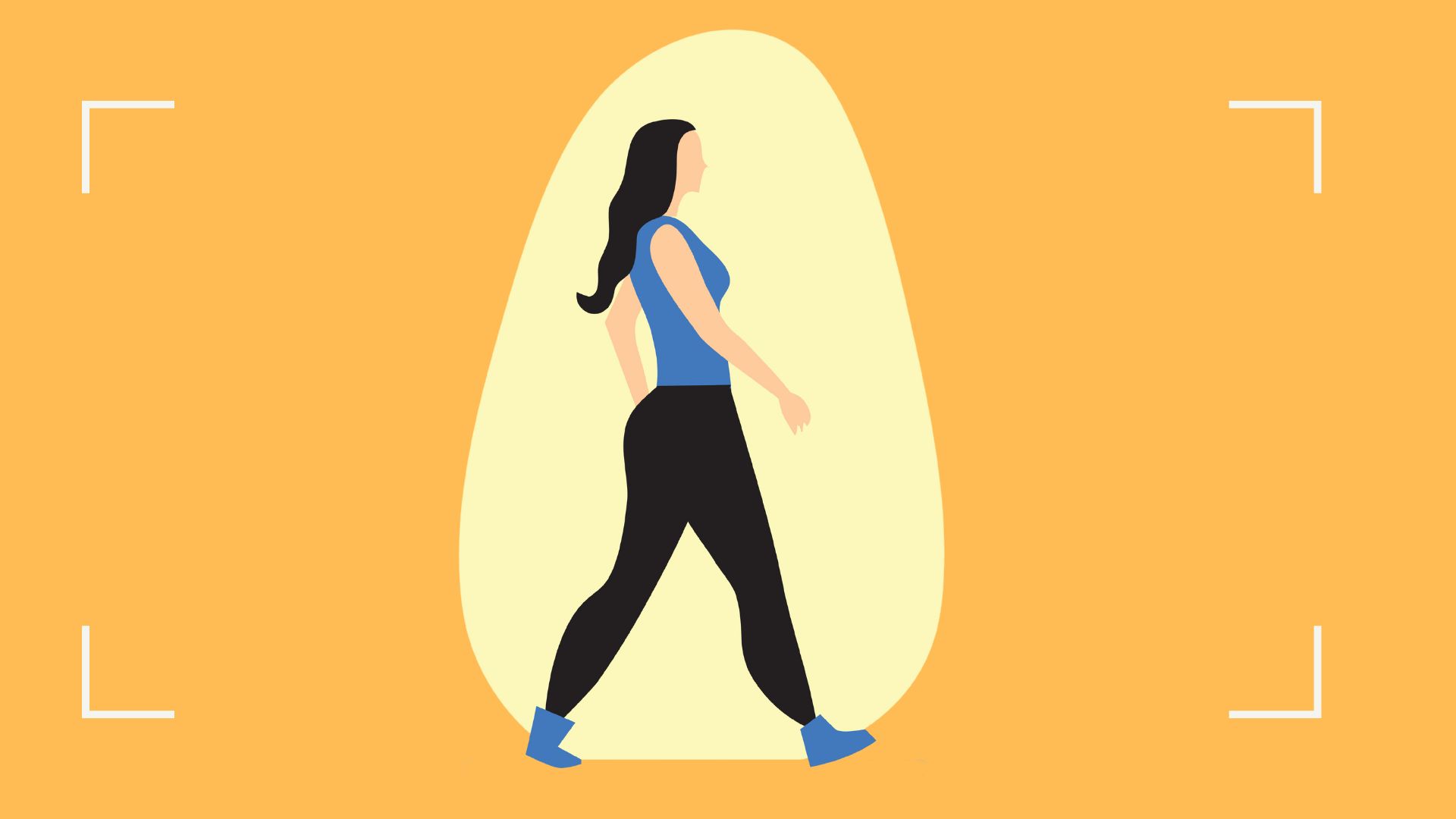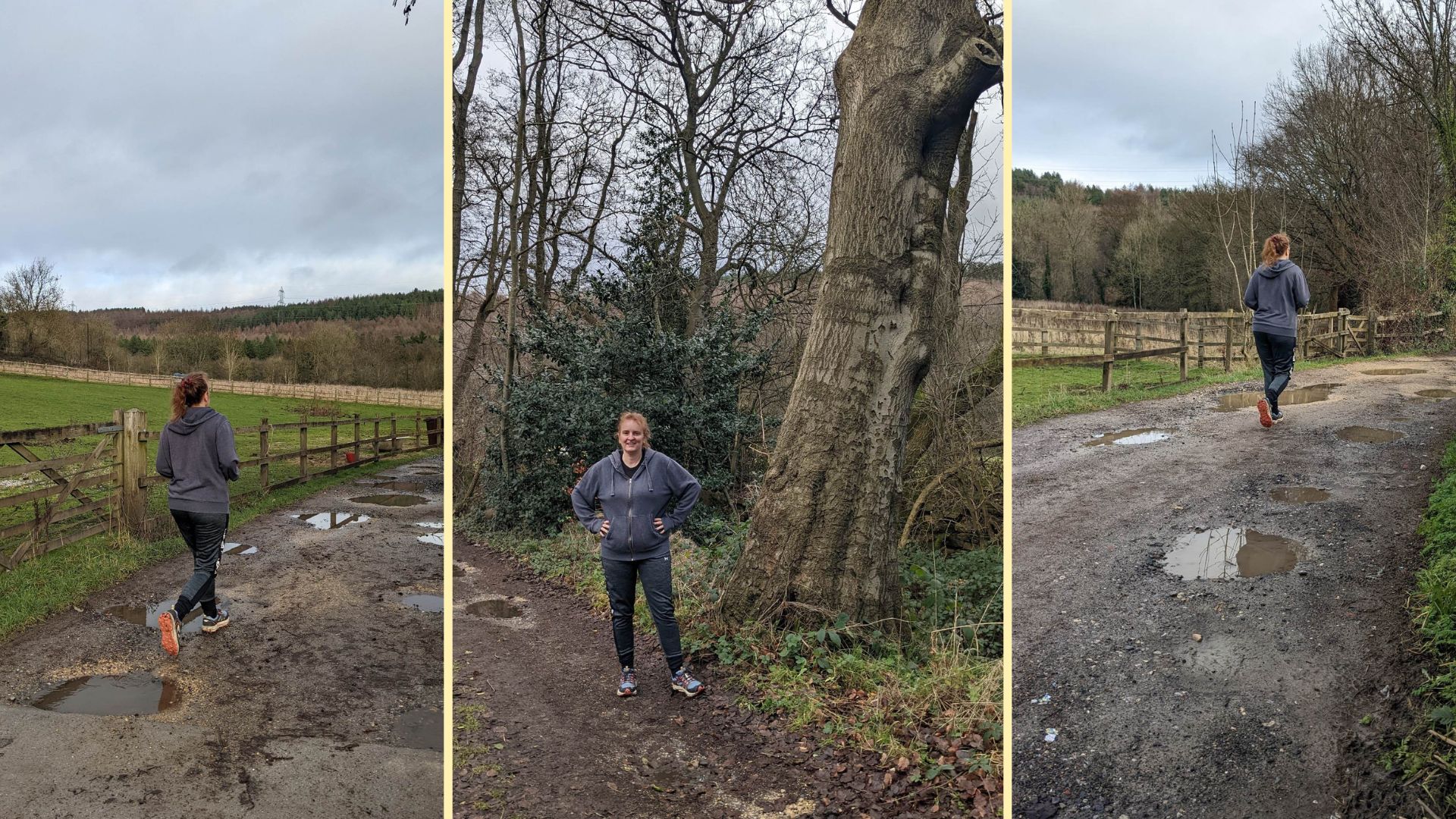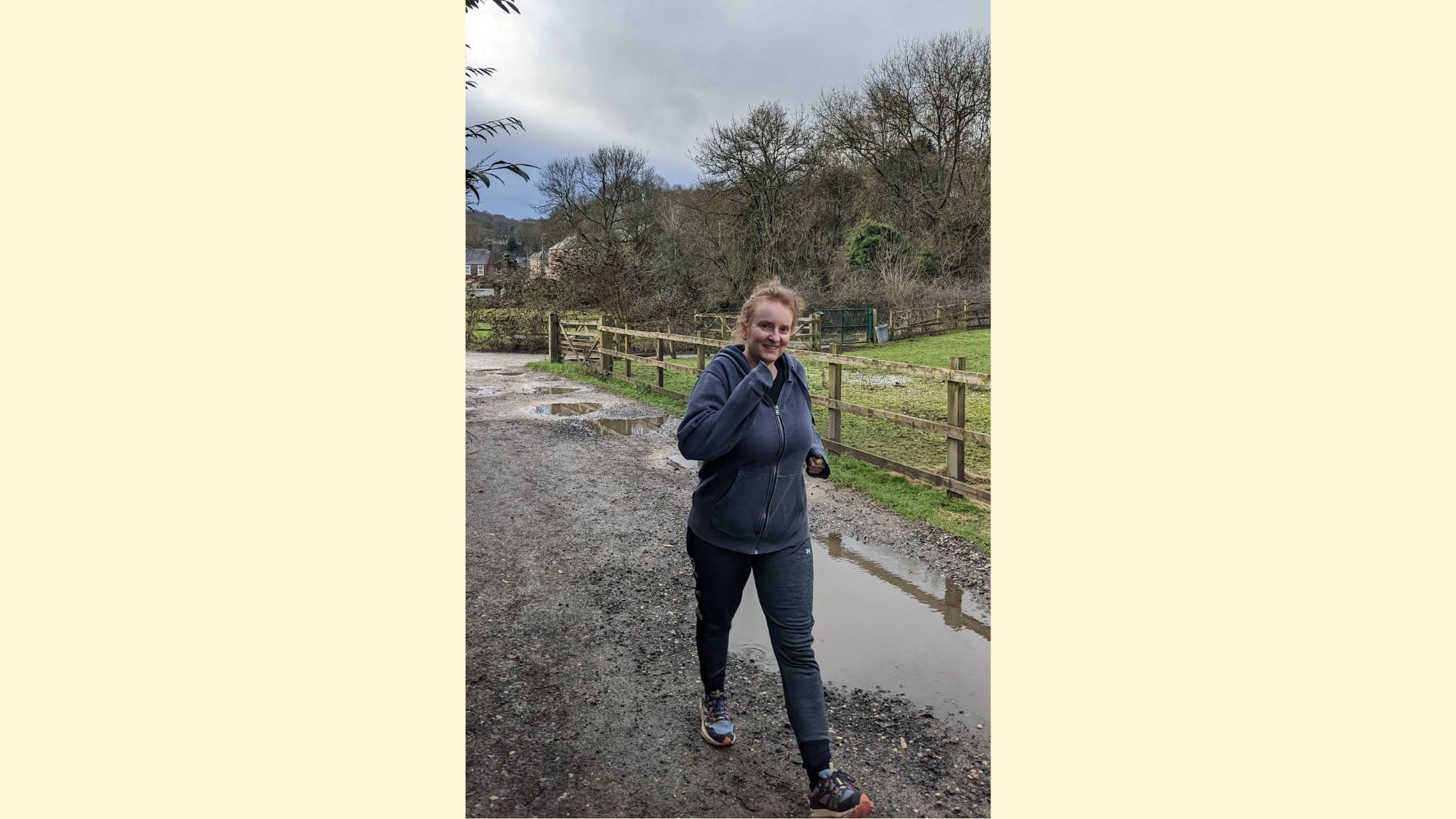Is power walking a good workout? Here’s what I learned after finally trying it myself
Writer Samantha Priestley puts power walking to the test to discover the health benefits


Power walking is walking at speed, faster than you would normally walk, but not quite a jog. To qualify as walking you must have one foot on the ground at all times, but to power walk, you need to be quickening your walking pace. And it’s just about the feet and the legs. One of the great things about power walking is that it’s an overall body exercise. The arms are up, active, and powering you forward just as much as the legs.
This very particular type of exercise is something I’m very familiar with, though not until recently as a participant. Here in Sheffield in the UK, when I was a child, I used to see the ‘star walkers’ as they were called, walking in this peculiar fast fashion past my house. They were so called because every year the local paper organized a walking race that anyone from the city could enter. I saw these people, walking fast, their arms pumping away and I thought how strange they looked. Not quite a jog, but not a normal walk either.
The last star walk took place in 2000, but now, 23 years later, I've decided to give it a go myself. It takes a little bit of getting used to and, at first, I thought I must look ridiculous. But once I stopped caring about how I looked and focussed on what I was doing, I could feel how much it was working my body. Here’s how power walking went for me, and what I learned doing walking as a workout with this popular form of exercise.
Is power walking a good workout?
1. Power walking can help build strong bones and muscles
Power walking can shift the pressure from your joints to your muscles, especially if you power walk uphill. This makes it a great exercise for anyone suffering from joint pain. I found this especially relevant to me, as I negotiate my way through menopause, but it’s equally important for anyone starting on their physical fitness journey and anyone trying to increase their general mobility.
I noticed the muscle strength increase in my legs and my abdominal muscles, but as you use your arms as well in power walking as well, it's working all of your muscles at the same time. Regular walking will work your calf muscles, quads, and hamstrings, but when you’re power walking you can add your shoulders, upper back, and glutes to the list too. I might have only done power walking for a week, but I really felt the burn by the end.
Because walking is a weight-bearing exercise, it also builds and maintains strong bone density, reducing the risk of conditions like osteoporosis over time due to the impact of feet hitting the ground, shows research from the Istituto Ortopedico Rizzoli in Italy. However, it's also low impact compared to running but higher impact than regular walking so you get the best of both worlds.

2. It's low impact
Speaking of low impact, jogging and running are great and I do enjoy a good run, but I have suffered some injuries in my feet and ankles in the past, including tendonitis, which has meant I’ve had to take some time out. Although power walking is still an impact exercise, it puts far less stress on your body than running and there’s very little chance of injuries comparatively, studies by the National Cancer Center in Maryland suggest.
Sign up to our free daily email for the latest royal and entertainment news, interesting opinion, expert advice on styling and beauty trends, and no-nonsense guides to the health and wellness questions you want answered.
I found power walking to be a great substitute for jogging and running as I'm recovering from injuries due to its natural lower impact and it allowed me to keep moving. As with all exercise, there is always the risk of injury, and care should be taken, but I've certainly found that power walking feels a lot more low impact and reduces those risks.
3. Power walking boosts cardiovascular health
While walking at a moderate speed is still a good exercise and it gets you out breathing fresh air and improves your overall health, I found that power walking picks up the pace and gets your heart rate up even more.
Power walking takes your heart from the low-intensity zone, which you experience while walking at a normal, relaxed pace, to a moderate-intensity zone. This strengthens your heart and gives you a good cardiovascular workout, with a study by Waupun Memorial Hospital showing that women who walk at a higher intensity than regular walking see significant increases in health benefits.
4. Reduces stress
There’s nothing like standing outside and taking in some deep breaths of fresh air to calm us down when we’re stressed. I found combining the simple act of being outside with walking at speed really helped to take my mind away from the stresses of the day and refocus me, almost like walking meditation. I started on my walk using the time away from work and stress to mentally unpick problems and do some mental sorting but my mind naturally relaxed after a while and I wasn’t worrying or thinking anymore. I was just enjoying the nature I walked through.
Power walking worked better for me than running for calming my mind, as I wasn’t dashing past scenery so fast I couldn’t appreciate it. Instead, while still getting all the physical benefits of walking, I could let myself relax and take everything in. I leave my phone at home when I go for a run and I did the same when I went out power walking. It gave me a greater sense of being free, just me and my surroundings, and while power walking I felt much more relaxed for leaving my phone behind.

5. Improves sleep
This is something I really noticed early on when I started power walking. A busy life combined with menopause symptoms means I struggle to sleep sometimes, leaving me feeling tired and heavy the next day. After a week of power walking I found myself feeling more tired in the evenings and enjoying a much more unbroken and deeper sleep. I feel refreshed when I wake up in the morning and more rested during the day. I’ve always loved walking generally and I’m tired in the evening when I walk during the day, but I found there’s a distinct difference when it comes to the effects walking faster has on sleep. My whole body is tired, my muscles are tired, and my sleep is much more satisfying because of that.
Can power walking help you lose weight?
I haven’t altered my diet at all and I’ve already lost weight since I started speed walking. This will differ for everyone as everyone is different, but for me, there’s been a noticeable change. I do eat healthily anyway but I’ve overindulged over the holidays like everyone else. So, I was surprised to find that I hadn’t put weight on and I had actually lost a little bit.
I envisage this improving more now I’m back to normal eating, as weight loss is controlled by a calorie deficit. More calories burned than we are taking in means we lose weight. Exercising more, plus dietary changes, help with this.
I’ve been walking for weight loss in this way for 30 to 45 mins each day over a week. I feel healthier and even my family tells me I look healthier. Plus, I’ve already started to see a change in my body shape and weight.
Tips for power walking
- Walk with friends: When it comes to walking vs running, walking is a much more sociable activity as even though you are walking at speed and getting your heart pumping faster, you can still talk to each other. It’s also a great way to gauge how fast you’re walking. If you’re using a treadmill you can check your speed, but when you’re outdoors it’s harder to know if you’re walking fast enough or not. Having a friend with you can act as your speed checker. If talking for too long is difficult and you’re getting out of breath trying to say more than one sentence at a time, you’re power walking.
- Check your posture: It’s important to stand up straight when power walking, to get the most out of the exercise and to avoid injury. Watch that you’re not slouching or leaning forward. Make sure your body is moving symmetrically. This is especially important if you’re recovering from an injury as injuries alter our weight bearing and can make us put too much pressure on one side of our body. Focus on staying balanced when you walk with your shoulders back, head up, and eyes forward.
- Take smaller steps: You might think that a big stride is better for speed walking and will make you faster, but smaller steps are more efficient and you’ll walk faster by making your stride shorter and taking little steps forward instead of big ones. Taking smaller steps also increases overall activity as you’re taking more steps per minute.
- Pump those arms: The arm action involved in power walking is the thing you might be most self-conscious about. We tend to think we look silly moving our arms in this way while we walk, but it’s important to get those arms pumping for a full body workout and to power us forward. You should be doing the same thing with your arms that you do while running, but in time with your walk. This will help get your heart rate up and tone your upper arms.
Samantha is a freelance writer from Yorkshire, writing about health and wellbeing for Woman & Home, Reader's Digest, Giddy, and Good Housekeeping. For the past 15 years, she's combined her personal experiences with reporting, to write about menopause, fitness, sleep, and healthy eating. She also writes about travel and food and drink for The Independent, The Good food Guide, Lonely Planet, Frommer's, and more.
